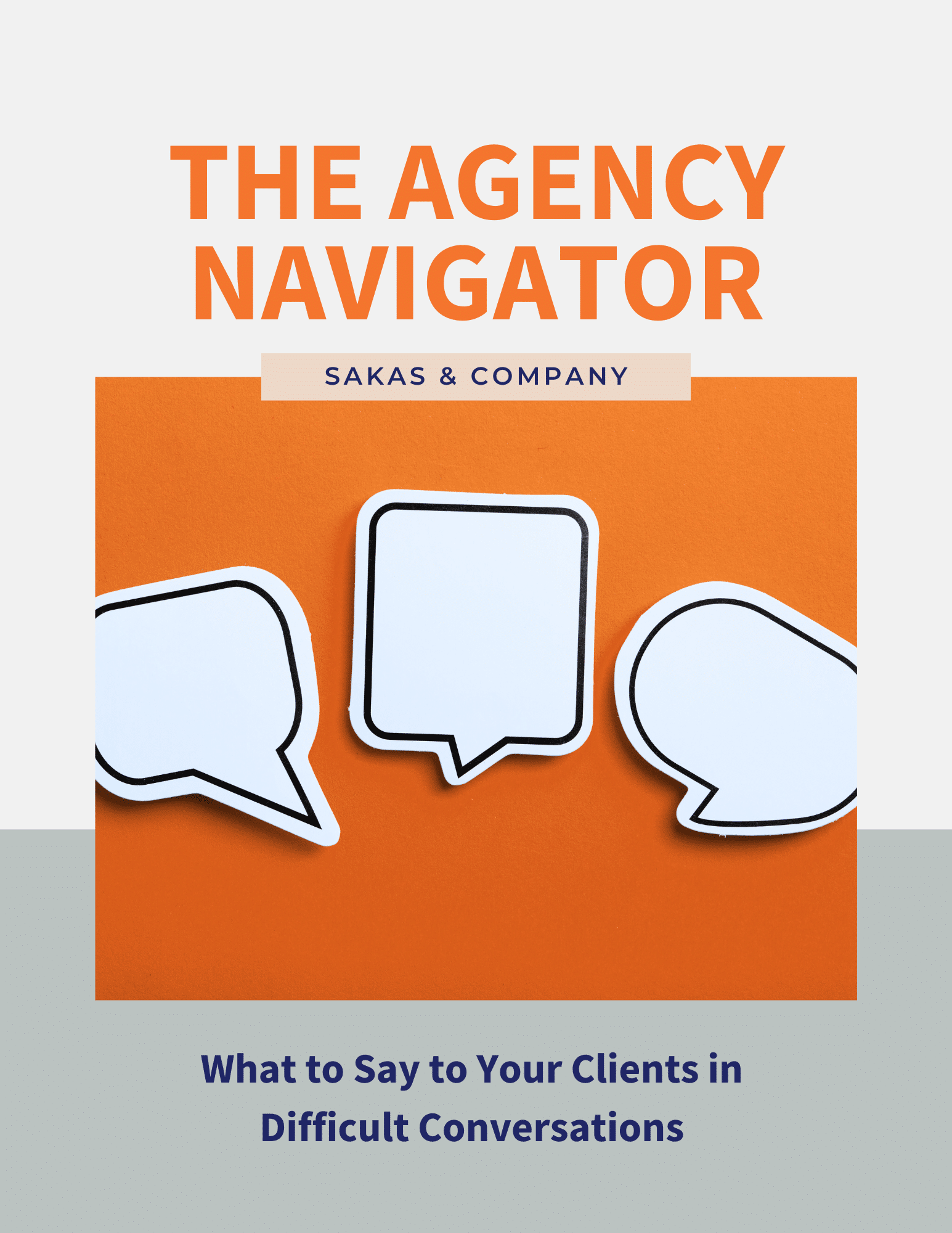You probably hear from small-budget sales prospects who can’t afford your core services. Instead of turning them away, what if there were a way to profitably help them—and turn some of them into big clients?
You can succeed in offering lower-priced services to smaller-budget prospects—but you have to be strategic about it.
If you’ve tried offering lower-priced services before and it didn’t work, I’ve identified some ways you can improve your chance of success this time.
The key is to manage expectations about client service and deliverables—in this model, you’re selling “McDonald’s at McDonald’s prices,” not “fine dining at McDonald’s prices.”
When someone calls and they can’t afford your existing options, you have two options:
- Say you can’t help them (and ideally refer them to another agency that can).
- Offer them a smaller-scope option that your agency fulfills.
Why you’re struggling with this now
Many agencies suffer from what I call the Client Dilution problem—they’re wasting time over-servicing tiny clients who demand more attention than their budgets allow.
Have you tried offering lower-priced options before and it didn’t work? It likely didn’t work because you weren’t reducing the level of service to reflect the lower prices.
You can profitably service small clients if you’re strategic about it, by structuring things properly from the beginning. This can be a good way to build your sales funnel—sell people small projects or packages as your foot in the door, and then upsell at least some of them to higher-ticket work.
Agencies offering lower-priced options
Let’s look at examples of agencies doing profitable work at lower price-points:
- One of my clients “grows” six-figure clients at their agency by starting them on a $3,000 to $5,000 paid discovery project.
- Another client completes small projects as profitably as large projects, because they have the systems and internal discipline to make it happen.
- And another client offers a monthly “priority access” retainer that gives clients front-of-the-line access to emergency help—which is itself billable at a premium rate.
I’ve seen this myself as an agency advisor; let’s look at what you can learn from my approach.
How I do smaller-scale work profitably
I like helping clients via ongoing engagements like Executive Coaching (1:1 or with several leaders from your agency). Clients tend to see big results—but it’s an investment.
That’s why I offer a lower-commitment option: one-off consulting calls. My ActionPath calls are less comprehensive than the Agency Growth Diagnostic or ongoing coaching, but they’re a lower commitment. And they’re still profitable.
For coaching, clients do an initial project to inform my recommendations and so they can decide whether to continue.
For one-off advice, clients schedule via Calendly; we do the call via Zoom, and they can a semi-automatic recap via Fathom. I review their pre-notes and then can focus on the call itself.
How to make this work at your agency
Offering lower-priced options doesn’t work unless you’re strategic about it. Here how to make this work for your agency.
- Decide whether to highlight or downplay the lower-priced options in your marketing. You don’t want to cannibalize your higher-end services, but you also don’t want to scare away otherwise good prospects who might prefer to start small (and then spend more later).
- Manage your sales costs. Focus on “fast failure” here—you can’t afford to invest 20 hours of sales time on someone who’s going to buy a $500 something-or-other. Refer people to the lower-priced service (or another firm) as soon as it’s clear they’re not a match for your usual higher-priced options.
- Manage expectations about quality, including client service. Your lower-priced services likely need to be at a lower level of quality. That’s not to say they should be bad, but people need to understand they won’t get white glove client service. For instance, they might get email support but not live support, or the deliverable is a Zoom call with advice instead of an in-depth written plan. This can create upsell risks (e.g., people choose not to upgrade if they can’t afford additional help) but you can mitigate that.
- Streamline the delivery process, including delivery costs. Manage budgets closely. Going two hours over on a 500-hour project is tiny. Going two hours over on a three-hour project is a problem. Use AI and automation to make things run efficiently. Consider putting lower-priced clients into a different client service process—for instance, using a “trouble ticket” system instead of having a dedicated account manager.
I recently spoke with a new client whose agency offers a $100/month service that includes hosting and WordPress plugin updates. Overall, most agencies shouldn’t offer hosting—because they lack the technical expertise and support infrastructure to do it profitably—but his agency has it down. Because he closely manages sales and delivery costs—and client expectations—he’s created a great source of recurring revenue.
Caveat: If you have small-budget clients who demand big-budget service, you need to reset their expectations or fire them.
Question: What do you do when small-budget clients can’t afford your core services?


